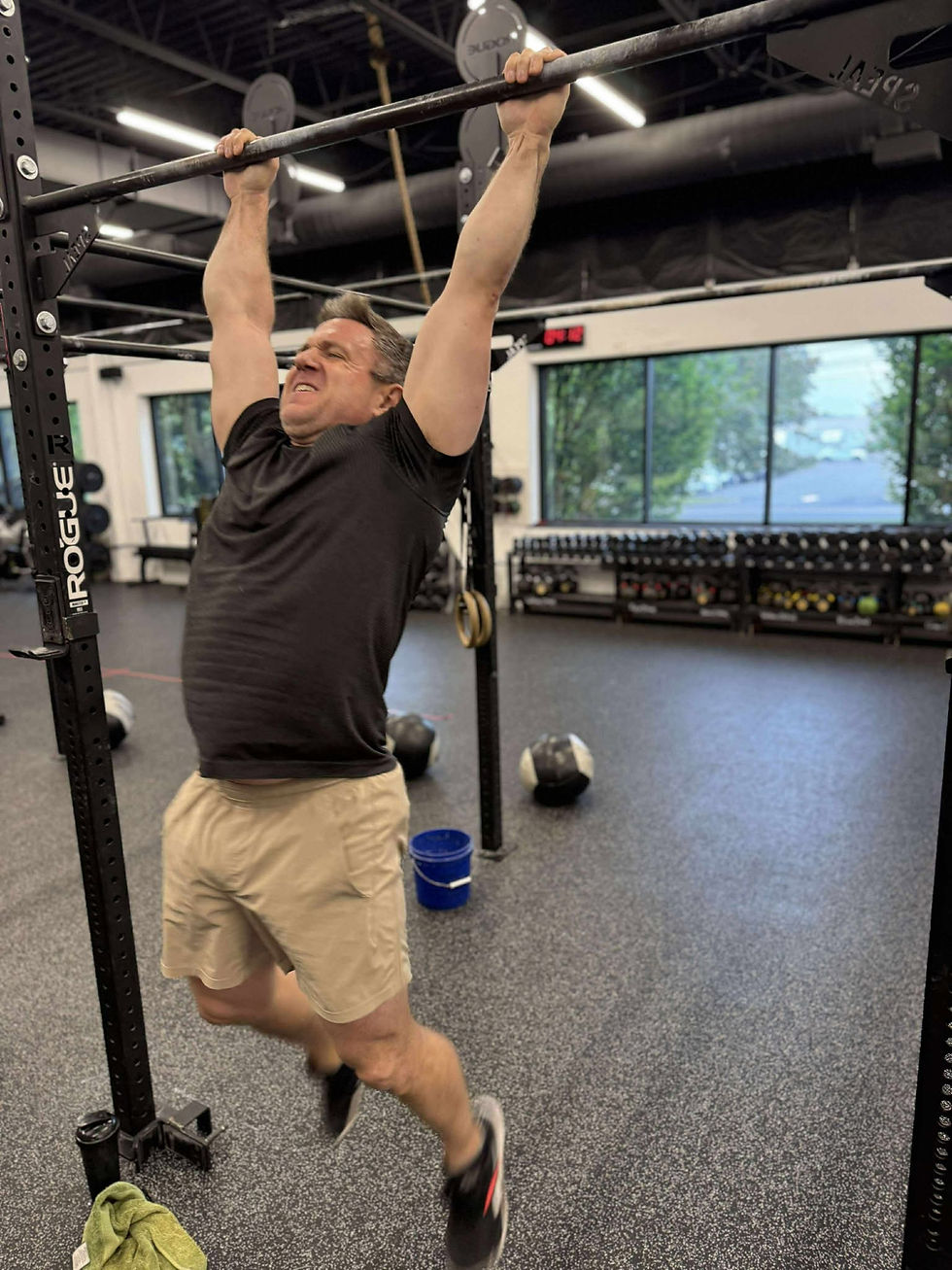Don't Skip the Sprint: Why Short, Intense WODs are Essential to Your Fitness
- CF201
- Sep 26
- 4 min read

Hey everyone! You just crushed a tough 40-minute Partner WOD on a Saturday, and that feeling of sustained exhaustion is certainly satisfying. But sometimes, when you see a workout programmed that’s only 5 or 8 minutes long—think Fran or Grace—you might wonder, "Is that really enough?"
The truth is, those short, high-intensity WODs aren't just a quick way to squeeze in a workout; they are a critical, non-negotiable component of true, well-rounded functional fitness.
Here's why you need to embrace the sprint, and why every session doesn't need to be 40 minutes long.
The Mindset Shift: Breaking Free from Slow-Paced Cardio
If you come from a background of running long miles, spinning classes, or other slow-paced, steady-state cardio, the idea of a 7-minute workout making a difference feels counter-intuitive. Your brain is conditioned to associate effort with duration.
The key difference lies in the concept of maximal intensity.
People who are used to long, slow cardio often struggle with the simple concept that slowing down isn't always the answer—in fact, it's the problem. By training only the aerobic system, you limit your body's ability to adapt to high-power output, causing you to feel gassed faster in mixed-modal workouts.
Embracing the sprint requires a mental shift: your body adapts to the specific stress you place on it. If you never push the accelerator to the floor, you never increase the engine's capacity for speed. Short, intense WODs provide the specific neurological and metabolic stress needed to unlock that higher gear. By intentionally integrating these sessions once or twice a week, you're building a more robust, versatile engine.
The Science of Intensity: Maximizing Power Output
The core of CrossFit is built on maximizing Power, which is defined as force multiplied by distance, divided by time (or simply, how quickly you can move a heavy load). Long, endurance-focused WODs are great for building stamina, but they inherently force you to pace yourself and produce less power.
Short, high-intensity workouts force you to flip the switch:
Anaerobic Energy: WODs like Fran (which should take less than 10 minutes) rely heavily on your anaerobic energy system. This system allows you to produce maximum power, but it quickly builds up metabolic byproducts (like lactate) that cause that intense, immediate "burn."
True Power Output: When you know the workout is short, you can push the pace closer to your physical limit. This is where you develop true maximal strength and speed, which transfers directly to every other lift and movement in the gym. If you can’t run fast for 5 minutes, you definitely can’t run fast for 40.
Adaptation at the Cellular Level: The high-intensity, short-duration work triggers adaptations in your Type II (fast-twitch) muscle fibers and dramatically improves your body's tolerance to and clearance of lactic acid.
A Balanced Approach: Matching the Stress to the Goal
"Junk mileage" is the term we use for training that doesn't effectively stimulate strength, speed, or high-level endurance. If you only do long, moderate-intensity workouts, you risk falling into this trap.
Short, intense workouts are essential because they force specific, high-value adaptations. Our programming at CrossFit 201 is structured to ensure you don't miss out on these benefits:
WOD Length | Primary Focus | Physiological Goal | Key Adaptations |
Short (5-10 Minutes) | Intensity & Power (Fran, Grace, Isabel) | Anaerobic Capacity | Increased muscle fiber recruitment, improved rate of fatigue tolerance. |
Medium (12-25 Minutes) | Pacing & Stamina | Lactate Threshold | Improved ability to sustain high efforts before muscle failure. |
Long (30+ Minutes) | Endurance & Volume | Aerobic Capacity | Enhanced mitochondrial efficiency and improved fat utilization for fuel. |
If your goal is to be ready for anything, you must train your ability to perform maximally in all of these domains, not just the one that takes the longest.
The Hidden Benefits of the Sprint
Improved Recovery: Counterintuitively, training your anaerobic system with high-intensity sprints improves your body’s ability to clear lactate and recover between intense efforts and between subsequent workouts. The more efficiently your body can manage metabolic waste, the fresher you feel for the next session.
Mental Toughness: There is nowhere to hide in an 8-minute WOD. The short duration forces you to confront the discomfort and push past it, building the kind of mental resilience that pays off in every area of life. You learn to embrace the suffering because the finish line is always in sight.
Time Efficiency: For days when life outside the gym is busy, a highly potent, 10-minute WOD is far superior to a poorly executed, moderate-intensity 40-minute session. Quality always trumps quantity when it comes to intensity.
The Bottom Line: Don't Skip the Short Stuff
Next time you see a "short" WOD like Grace (30 Clean & Jerks for time) or Fran (21-15-9 Thrusters and Pull-ups), don't just roll over in bed and take a rest day. Embrace the intensity! It’s the essential key to unlocking your true power and speed. Trust the process, go all-out on the short sprints, and watch how quickly your overall performance improves.
Which intensity domain do you need to focus on next week?



